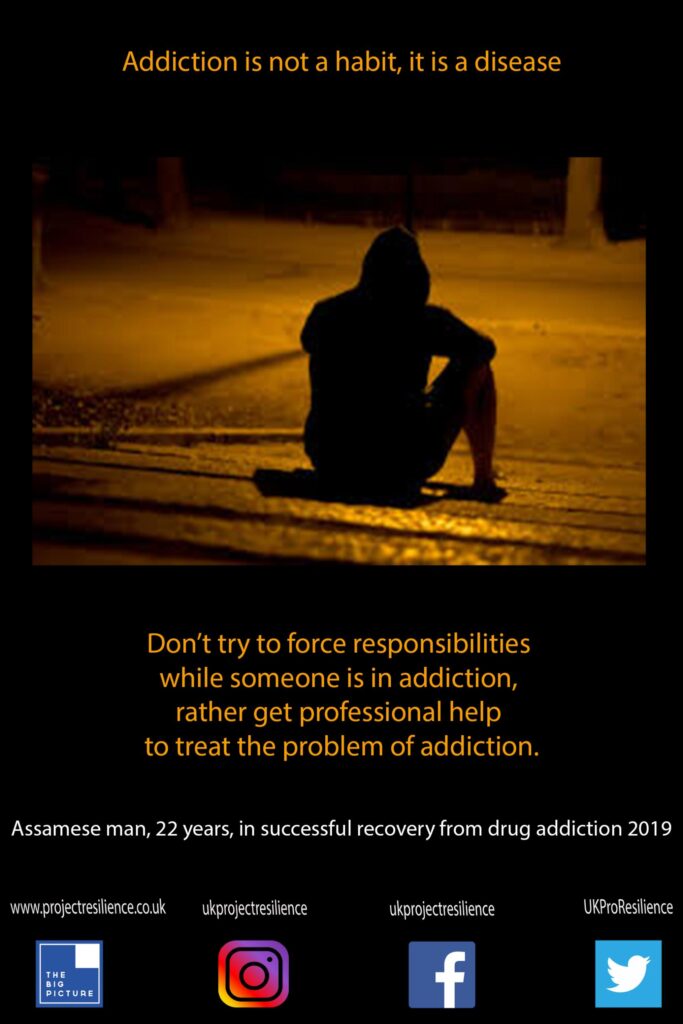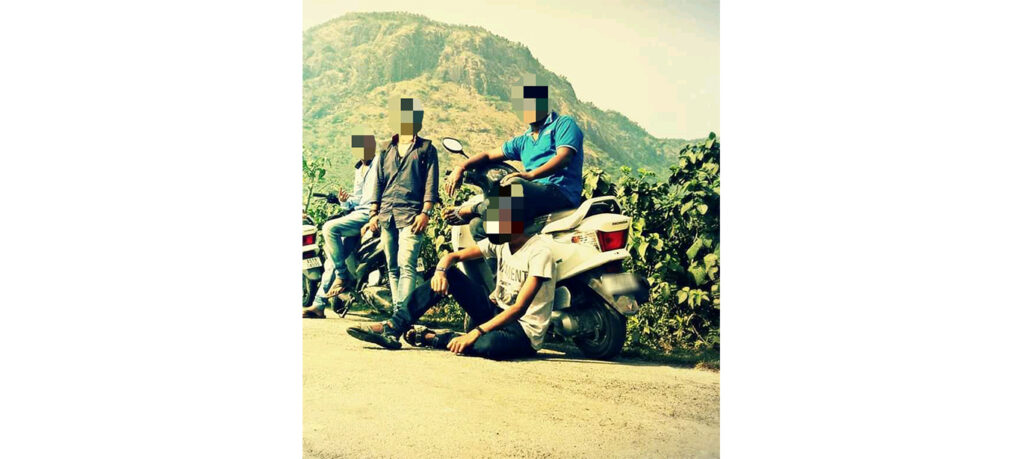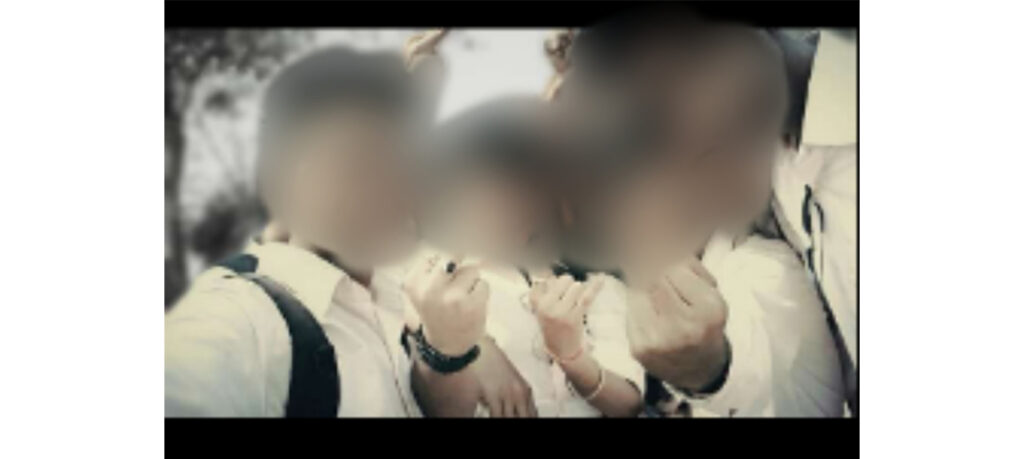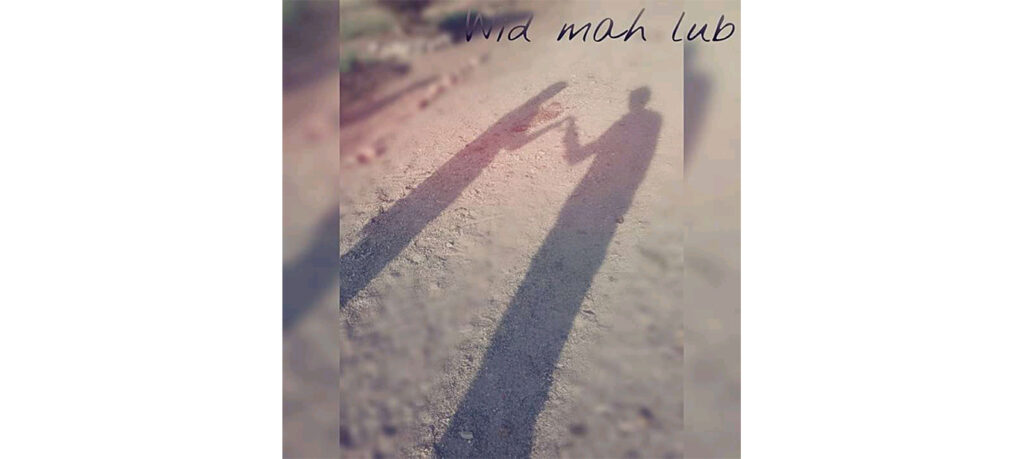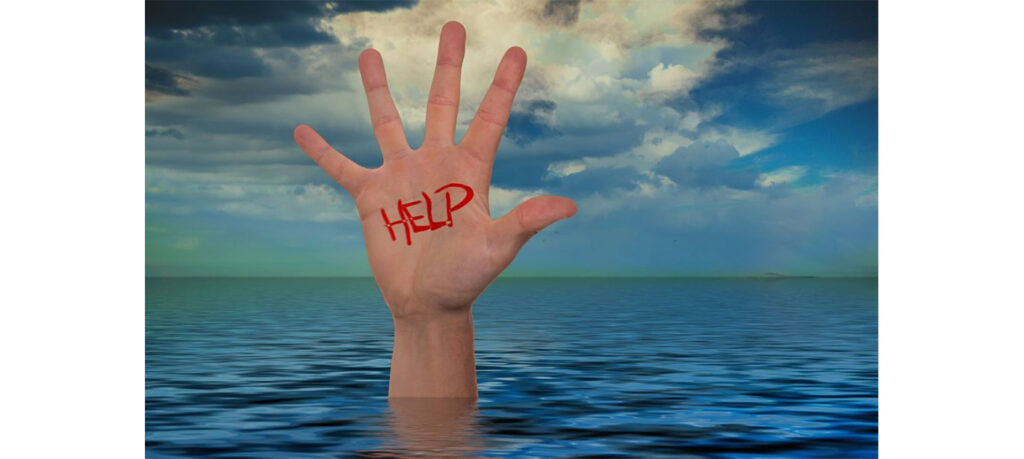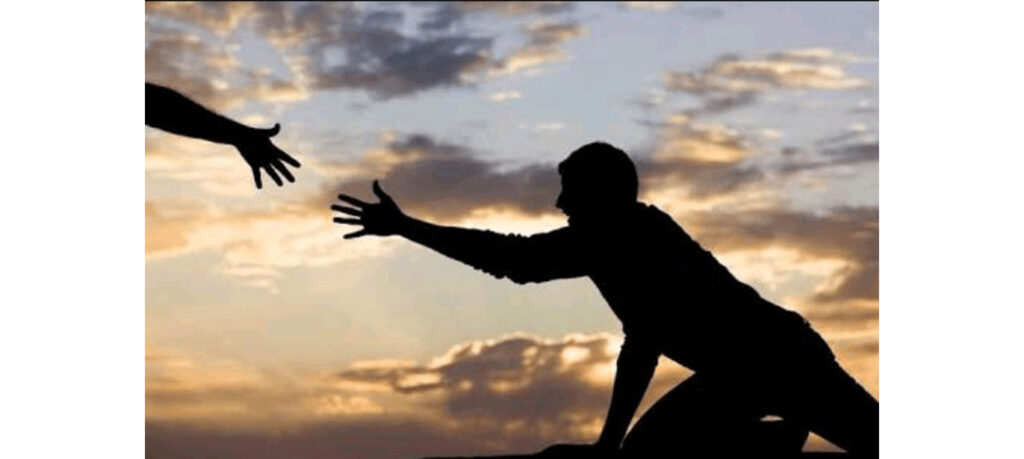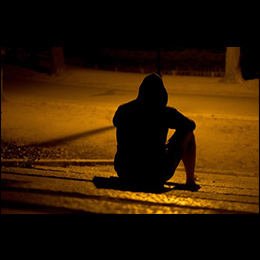Samar provided us with feedback on the addiction to recovery model by testing if he could use it to trace his pathway. Like many young people, Samar had to undergo a residential rehab programme more than once. Here is Samar’s journey to recovery.
For a description of our Pathways to Recovery Model click here

Phase 1. Recreational Use≫
Samar was a sportsman so kept away from addictive substances because it would affect his performance. However, he found himself having to cope with a relationship break-up and losing friends he used to hang out with. He didn’t know what to do, and felt helplessness, but then met some boys near his house who smoke weed.
“There are some people right, junkies type, by the field. I see them using substance. Now my earlier friends went away […] I will go there and see them that they are having weed. So I also started with them. Sitting alone I would keep thinking about random things. When I recall old things, sometimes about sports, I feel guilty.”
Samar started using weed and convinced himself there was no other way out of his misery: “In that situation I think that I want to go but cannot. My friends also left me. She also left me. So I somewhere kept continuing.“
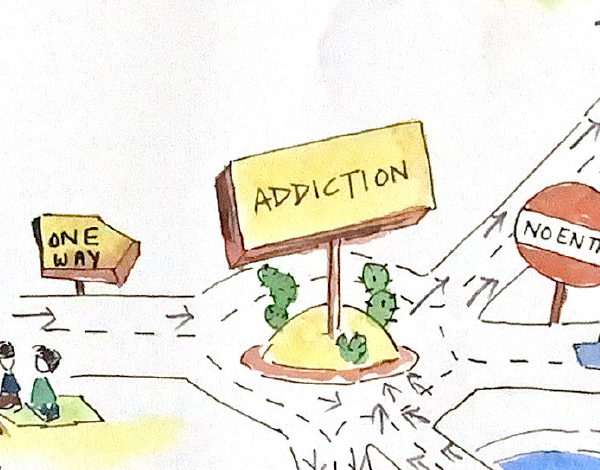
Phase 2a. Relaxed Addiction≫
Samar stopped getting a high from weed so became interested in other substances. One day, a few other boys near his house offered him heroin.
“…there were one or two more who would come, stay for some time, and then leave. They were using other chemical. They were using heroin. So sometimes I go there and keep sitting. They come, we talk, and we started bonding. They say ‘What will happen by having these? Do you get high?’ I also said ‘No. I don’t get high now.’ Then they said ‘Come with us.’ I went with them. Slowly, they taught me to chase heroin.“
Samar’s parents started noticing a change in his attitude and behaviour, but did not know what might be causing it.
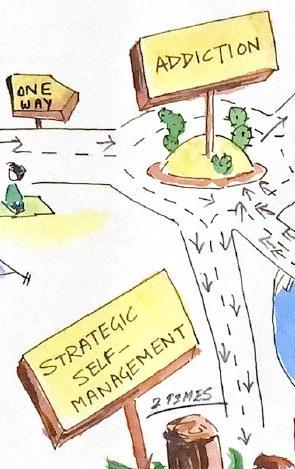
Phase 2c. Strategic Addiction≫
When Samar started showing physical signs of his heroin use, his parents began to be seriously worried: “Then at home again new problems started showing up. ‘He wants more money. The boy comes back and cannot even open his eyes. His eyes are always red.’ After waking up in the morning they see in the withdrawal time that my eyes are watery, nose is running, hands and legs are all pulling. So looking at the withdrawal even my family members got scared.”
Samar’s parents took him to the doctor and he was given medication that helped suppress his unpleasant withdrawal symptoms. Samar tried to quit heroin twice through medication, but without success: “I couldn’t get out of it. I will have doctor’s medicine for two days, three days, and after those two, three days when I get a little better, when physical withdrawal little, slowly, slowly things stopped feeling good. The time won’t pass.”
With no change of attitude or routine, Samar quickly relapsed: “My patience level was zero. I got intolerant about things. And the latest thing was that my lifestyle was totally messed up.”
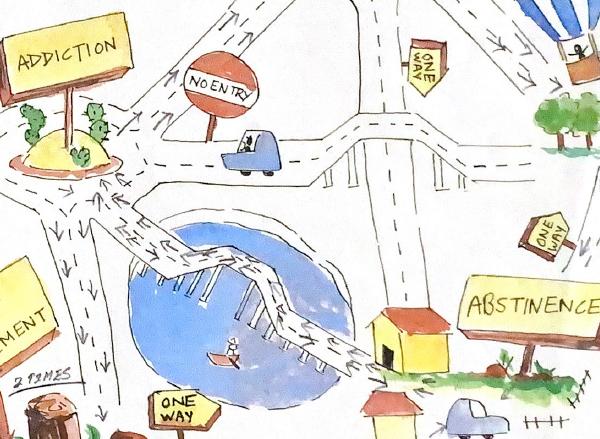
Phase 2b. Chaotic Addiction≫
When Samar started showing physical signs of his heroin use, his parents began to be seriously worried: “Then at home again new problems started showing up. ‘He wants more money. The boy comes back and cannot even open his eyes. His eyes are always red.’ After waking up in the morning they see in the withdrawal time that my eyes are watery, nose is running, hands and legs are all pulling. So looking at the withdrawal even my family members got scared.”
Samar’s parents took him to the doctor and he was given medication that helped suppress his unpleasant withdrawal symptoms. Samar tried to quit heroin twice through medication, but without success: “I couldn’t get out of it. I will have doctor’s medicine for two days, three days, and after those two, three days when I get a little better, when physical withdrawal little, slowly, slowly things stopped feeling good. The time won’t pass.”
With no change of attitude or routine, Samar quickly relapsed: “My patience level was zero. I got intolerant about things. And the latest thing was that my lifestyle was totally messed up.”
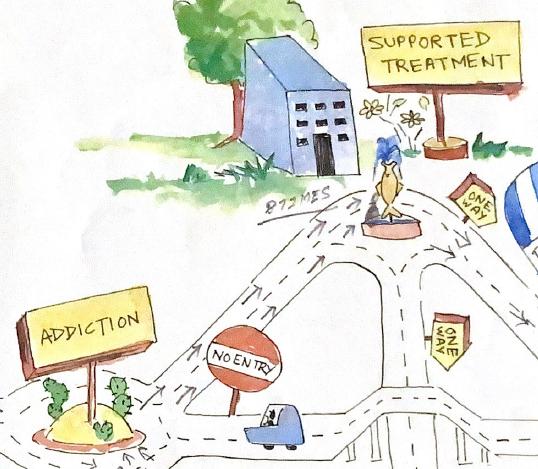
Phase 3. Supported Recovery≫
Back on heroin, his physical condition got so bad that his parents felt they had no choice but to send him to a rehabilitation facility.
“…when I keep sleeping for two three days, my father comes and touches my body and sees that my whole body has become cold that maybe he will die only for a long time he has blacked out. At home I would keep lying in the bathroom for two three hours. And by breaking the bathroom door they bring me out. So by doing all these at home they contacted rehab.”
While in rehab, Samar focused on positive messages from experienced addicts-in-recovery: “I go after people who were like me but today are living their life nicely. I started following those people’s footprint, how they did the first initial years.”

Phase 2. Addiction (relapse)≫
After completing the rehab programme, although Samar had been highly motivated to quit, after a short period of abstinence he started using again.
“After going out I have not got those things. Those empty spaces have not filled up where the society cannot accept me and those things somewhere keep me away from others. So after doing like this I used again where again the same circle was repeating.”
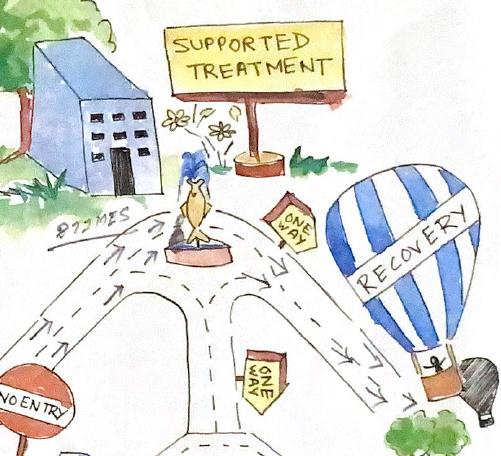
Phase 3. Supported Recovery (re-engagement)≫
During his first time in rehab, Samar learned it is even harder to stop using after a relapse. Hence, he was quick to realise the dangers and, after two-and-a-half months, returned to treatment.
“I just called them immediately saying that I have relapsed and they said ‘It’s okay’ […] I told my family members as well. They said ‘’It’s good. If you want to go, then go.’”
At the time of interview, Samar has been in recovery for one year one month and assists others in their recovery journey.
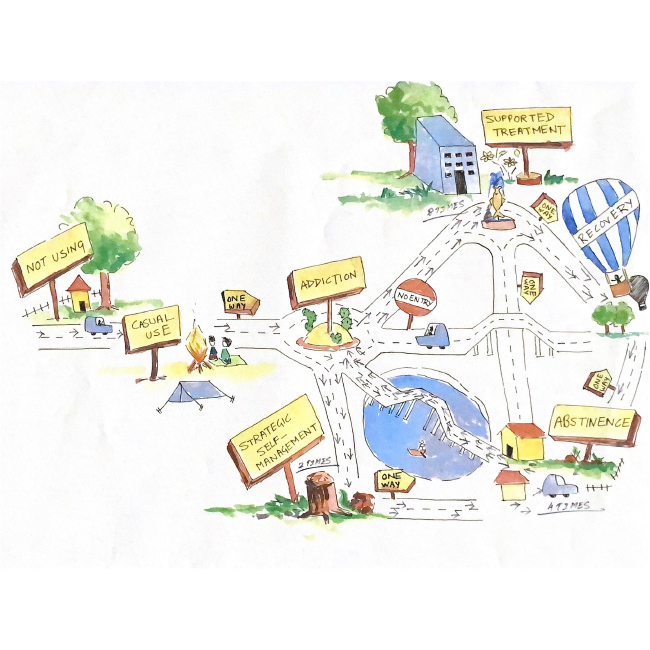
Samar’s poster – This is Samar’s message
